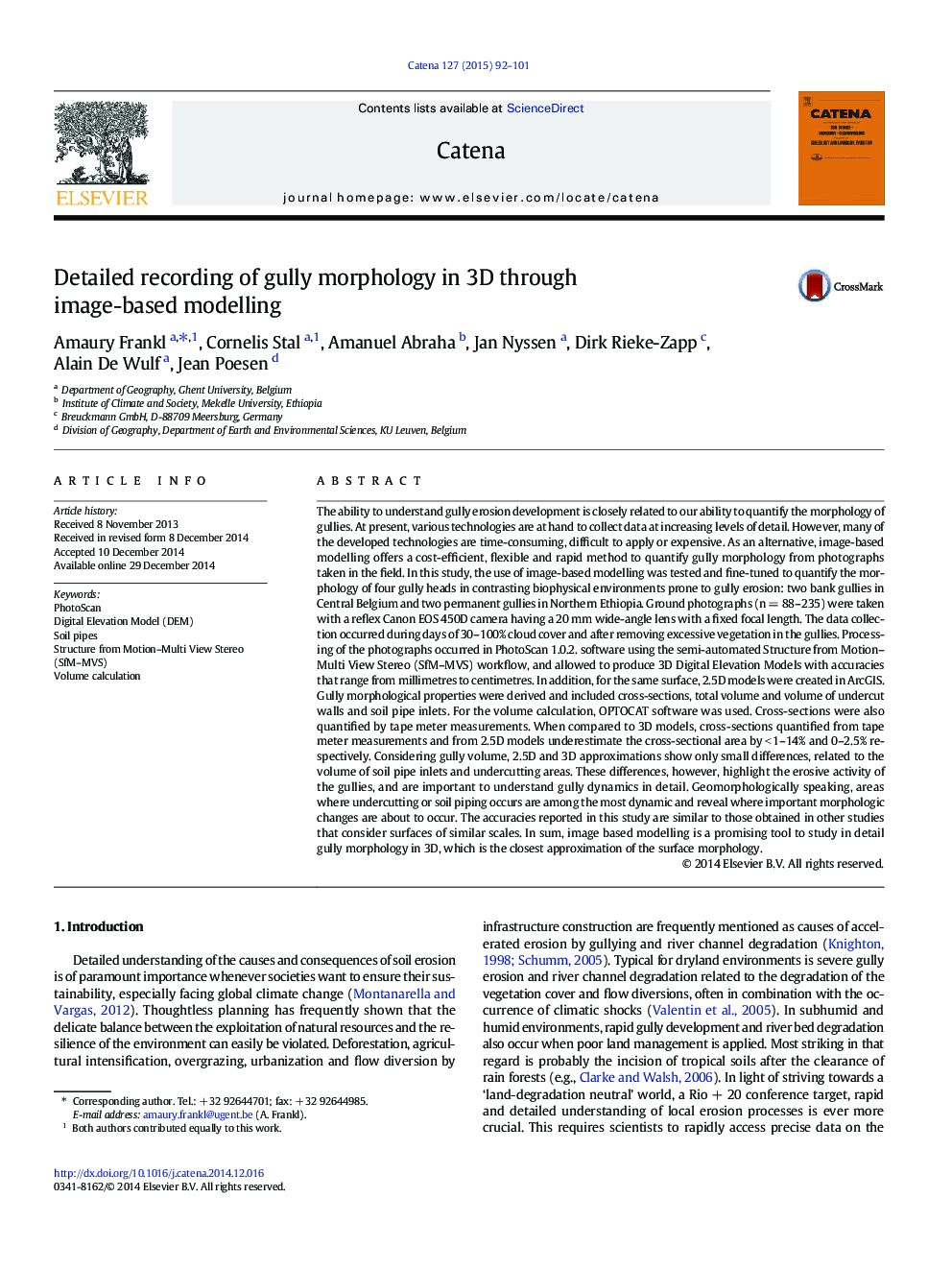| Article ID | Journal | Published Year | Pages | File Type |
|---|---|---|---|---|
| 4571212 | CATENA | 2015 | 10 Pages |
•Image-based photomodelling to record gully morphology in 3D•Examples from contrasting environments: Belgium and Ethiopia•A workflow for implementation•Potential for understanding gully erosion dynamics explained
The ability to understand gully erosion development is closely related to our ability to quantify the morphology of gullies. At present, various technologies are at hand to collect data at increasing levels of detail. However, many of the developed technologies are time-consuming, difficult to apply or expensive. As an alternative, image-based modelling offers a cost-efficient, flexible and rapid method to quantify gully morphology from photographs taken in the field. In this study, the use of image-based modelling was tested and fine-tuned to quantify the morphology of four gully heads in contrasting biophysical environments prone to gully erosion: two bank gullies in Central Belgium and two permanent gullies in Northern Ethiopia. Ground photographs (n = 88–235) were taken with a reflex Canon EOS 450D camera having a 20 mm wide-angle lens with a fixed focal length. The data collection occurred during days of 30–100% cloud cover and after removing excessive vegetation in the gullies. Processing of the photographs occurred in PhotoScan 1.0.2. software using the semi-automated Structure from Motion–Multi View Stereo (SfM–MVS) workflow, and allowed to produce 3D Digital Elevation Models with accuracies that range from millimetres to centimetres. In addition, for the same surface, 2.5D models were created in ArcGIS. Gully morphological properties were derived and included cross-sections, total volume and volume of undercut walls and soil pipe inlets. For the volume calculation, OPTOCAT software was used. Cross-sections were also quantified by tape meter measurements. When compared to 3D models, cross-sections quantified from tape meter measurements and from 2.5D models underestimate the cross-sectional area by < 1–14% and 0–2.5% respectively. Considering gully volume, 2.5D and 3D approximations show only small differences, related to the volume of soil pipe inlets and undercutting areas. These differences, however, highlight the erosive activity of the gullies, and are important to understand gully dynamics in detail. Geomorphologically speaking, areas where undercutting or soil piping occurs are among the most dynamic and reveal where important morphologic changes are about to occur. The accuracies reported in this study are similar to those obtained in other studies that consider surfaces of similar scales. In sum, image based modelling is a promising tool to study in detail gully morphology in 3D, which is the closest approximation of the surface morphology.
